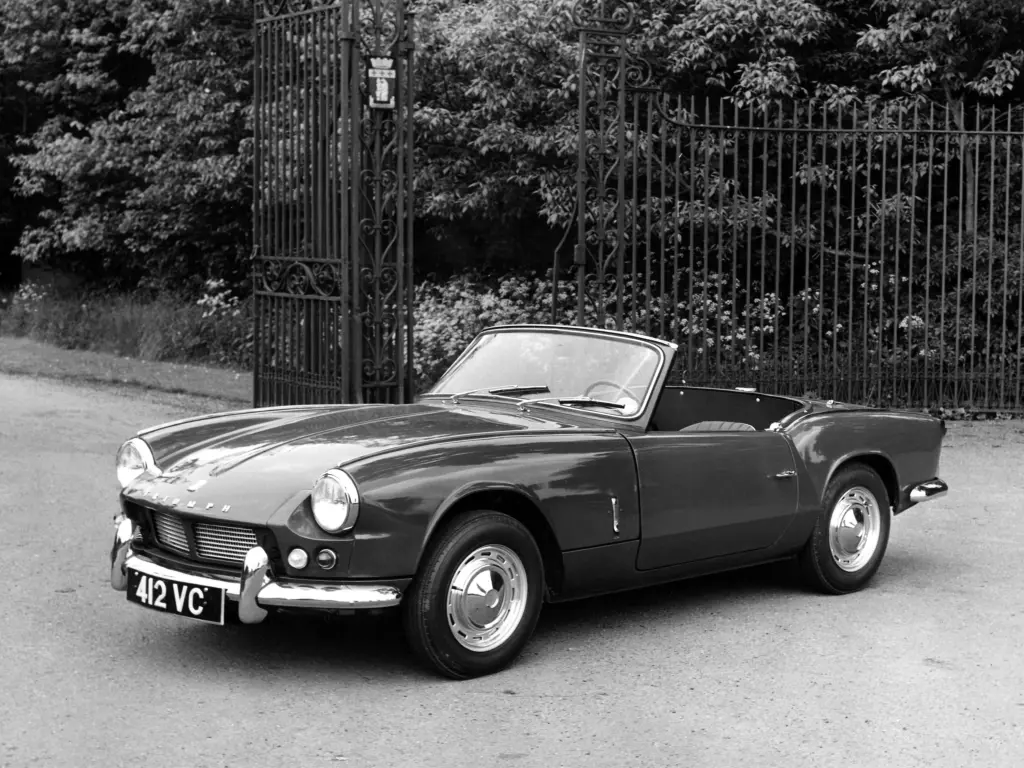THE TRIUMPH SPITFIRE: A CELEBRATION
29 December 2021
Imagine this scenario; it is the summer of 1961, and Leyland has completed their takeover of Standard-Triumph. Their executives are stalking through the Canley works and are not exactly happy at what they find. Yes, the recently launched Herald 1200 has great potential, and the new TR4 should prove a success, but sales of the Ensign/Vanguard saloon range are now minimal. Indeed, orders for the Luxury Six, ST’s rival to the Ford Zodiac and Vauxhall Cresta, are virtually at a standstill.

And when the newly appointed managing director of Standard-Triumph, Mr. Stanley Markland, toured the plant, he noticed a lightweight two-seater prototype hidden under a dustsheet. Intrigued, he removes the covering, inspects the bodywork and then sits behind the wheel. There and then, Markland informs his acolytes that this very promising looking sports car should enter production.
The name of this project was Bomb, and it dated back to the previous year. At that time, Harry Webster, Triumph’s director of engineering, wished to maximise the Herald 948’s potential. A further goal was to make an ST alternative to the Austin-Healey Sprite. He appreciated Giovanni Michelotti of Turin, and the great designer produced a car that would almost certainly appeal to the youthful enthusiast.
Unfortunately, the corporate upheavals within the ST empire meant that management sidelined the Bomb until the 13th July 1961, when development recommenced. Markland wished for the latest open-topped Triumph to debut at the 1962 Motor Show, a mere 16 months in the future. The model was also to be known as the Spitfire, a name probably chosen by Leyland’s chairman Donald Stokes.
When the Spitfire finally made its bow, there was no shortage of rival attractions at Earls Court. 1962 was also the year of the Morris 1100, the Ford Consul-Cortina and Zephyr/Zodiac Mk.III, the MGB, the Jensen C-V8, the Lotus Elan and the Vauxhall Velox/Cresta PB. Yet the Standard-Triumph stand certainly drew crowds, and by the end of the motor show, Canley had gained six million pounds of orders.
Some of the show goers were almost certainly attracted by the Spitfire’s technical specification. The 1,147cc engine boasted twin SU carburettors, and there were front disc brakes; the steering was via rack & pinion while the suspension was all-independent. Others noted the price included windscreen washers and an adjustable steering column. There were also external door handles and winding windows; luxuries not found on the Sprite Mk. II/MG Midget Mk. I.
Above all, the Spitfire’s lines really did capture the zeitgeist. Here was an affordable companion model to the TR4 that looked as contemporary as the latest Italian cut suit. Naturally, we will celebrate the sixtieth birthday of one of Triumph’s most important models next year. For now, here is some 1962 footage as a reminder of what might never have come about were it not for a curious managing director.
